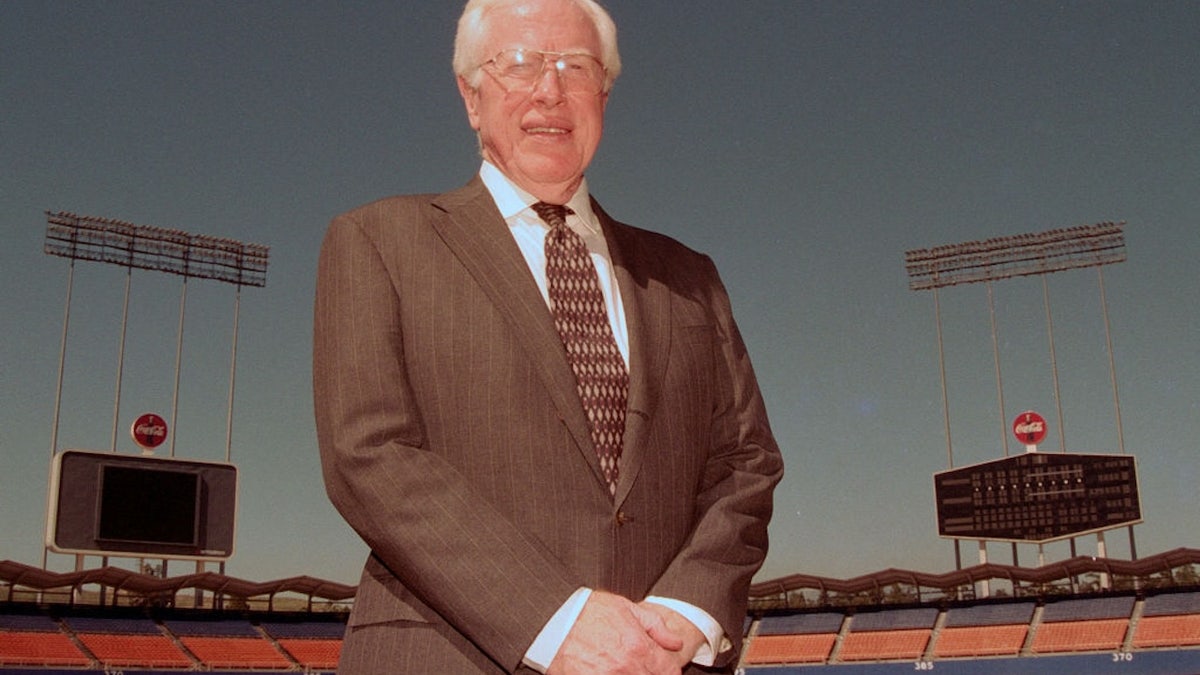[ad_1]
It’s been nearly 50 years since one of the biggest advancements in sports medicine: Tommy John surgery.
On Sept. 25, 1974, Dr. Frank Jobe first performed the operation on Tommy John, a professional baseball pitcher who played on Major League Baseball (MLB) teams between 1963 and 1989.
During the surgery, Jobe reconstructed a torn ulnar collateral ligament (UCL) in John’s left arm.
It was a pioneering achievement for Jobe and a lifeline for John, who went from a career-ending injury to 14 more years in the majors — and an eponymous connection to sports medicine that would live on long past his playing days.
Since then, Tommy John surgery — more formally known as ulnar collateral ligament (UCL) reconstruction, according to Johns Hopkins Medicine — has been performed on many other baseball players.
New York Yankees pitcher Tommy John delivering a pitch versus the Kansas City Royals during a game at Yankee Stadium on July 9, 1988, in New York. (Getty Images)
Those players include David Wells (1985), John Smoltz (2000), Stephen Strasburg (2010), Rich Hill (2011), Shohei Ohtani (2018), Justin Verlander (2020) and Bryce Harper (2022), to name a few, according to MLB.
“I wouldn’t still be standing here if it weren’t for a surgery like this,” Chicago White Sox pitcher Michael Kopech said, according to the Associated Press. “It’s doubled the length of my career.”
John Gallucci, a New Jersey-based physical therapist specializing in sports injuries, noted that Tommy John surgery has prolonged and saved many careers.
“Before this surgery, a torn UCL was considered a career-ending injury,” he told Fox News Digital.
“This surgery was a major advancement in treatment and was revolutionary for athletes and those who suffer from elbow injuries.”

Dr. Frank Jobe, orthopedic surgeon and Los Angeles Dodgers team physician, pioneered elbow ligament replacement and shoulder surgery for baseball players, a procedure commonly known today as Tommy John surgery. Jobe is pictured here in 1997. (Getty Images)
Alongside arthroscopic surgery and ACL reconstruction, Tommy John surgery is one of the biggest advancements in sports medicine in the last 50 years, according to Dr. Tim Kremchek, a longtime physician for the Cincinnati Reds.
“It [has] just prolonged and saved so many careers,” he said to the AP.
“Not just in baseball, but now for some other sports that we’re doing it for — so many other athletes, especially overhead athletes. But in terms of baseball, I think it’s allowed us to see some of the greatest players in the world continue to play for a long period of time.”
“It’s allowed us to see some of the greatest players in the world continue to play for a long period of time.”
In the debut operation at Rancho Los Amigos, a Southern California hospital, Jobe removed the palmaris longus tendon from John’s right arm, drilled four holes in his left elbow — and then used the tendon to replace the torn ligament.
“It wasn’t a new idea,” Jobe said in July 2013, about seven months before he died.
“It was just new for the elbow.”

In the first procedure, Jobe removed the palmaris longus tendon from John’s right arm, drilled four holes in his left elbow, and then used the tendon to replace the torn ligament (not pictured). (iStock)
The procedure itself hasn’t changed much since Jobe pioneered it, though doctors have made a few improvements.
“It has remained primarily the same, but advancements have been made,” said Gallucci.
“These advancements have made the surgery even more effective in tandem with work from physical therapists and certified athletic trainers during the recovery process.”
BASEBALL QUIZ! HOW WELL DO YOU KNOW THE POPULAR AMERICAN SPORT?
“Due to the advancements made and the rehabilitation process improvements, the standard recovery period has been cut nearly in half from what it was 50 years ago,” he added.
The effects of Tommy John surgery have been seen in players’ performance on the field.
Verlander won the AL Cy Young Award in 2022, two years after he had Tommy John surgery.

Tommy John of the New York Yankees is pictured prior to the start of a Major League Baseball game circa 1987 at Yankee Stadium in the Bronx, New York. (Getty Images)
Harper, who had the procedure in Nov. 2022, returned to Philadelphia’s lineup in May.
Dodgers pitcher Tyler Glasnow, who had Tommy John in 2021, struck out 162 batters in a career-high 120 innings last year.
Within months of receiving his second major elbow operation, Ohtani landed a record-breaking $700 million contract from the Los Angeles Dodgers.
“There’s no question that Tommy John is the most valuable reconstructive procedure there is.”
[ad_2]
Source link




